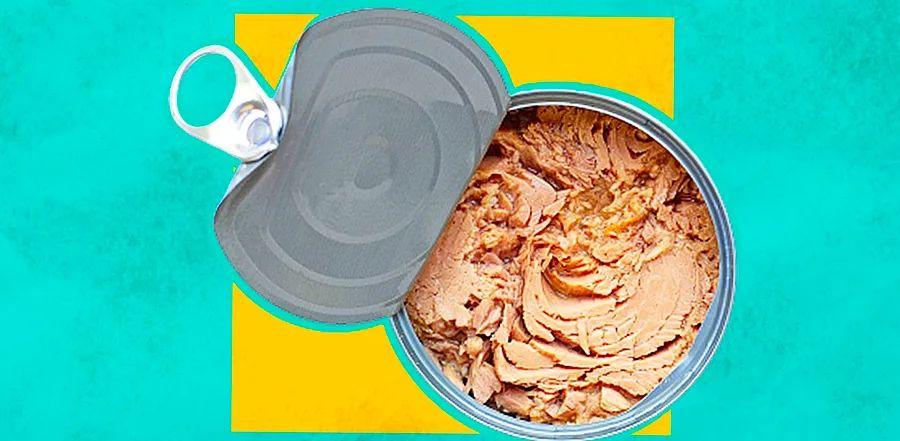6 Common Canned Tuna Storage Mistakes (and How to Fix Them)

Canned tuna is a pantry essential that's both convenient and versatile. Whether you're whipping up a tuna salad to top with greens or making a quick tuna sandwich, it's a go-to option. Thanks to its airtight packaging—whether in cans, jars, or pouches—it's easy to carry with you for a meal on the go.
Not only is tuna easy to use, but it's also packed with nutrients that help keep you feeling full. Registered dietitian Trista Best, MPH, RD, LD, explains that canned tuna is rich in omega-3 fatty acids like EPA and DHA, which support heart and brain health. Plus, it's a great source of essential vitamins and minerals such as vitamin D, B12, selenium, and potassium.
Canned tuna has an impressively long shelf life, often lasting anywhere from 2 to 5 years or more, depending on factors like packaging, processing, and storage. However, improper storage can shorten its longevity and diminish its nutritional value, warns Best.
To get the most out of your canned tuna, avoid these common storage mistakes and ensure every can delivers its full flavor and nutrition potential.
The Most Common Mistakes People Make When Storing Tuna
1. Storing in a Warm or Humid Location
To keep canned tuna fresh and maximize its shelf life, store it in a cool, dry area, away from direct sunlight and extreme temperature changes. Proper storage helps preserve the quality of the tuna and prevents spoilage or bacterial growth, according to registered dietitian Trista Best.
Exposure to sunlight and high temperatures can significantly increase the risk of spoilage. Placing your canned tuna near heat sources like stoves or ovens can raise the internal temperature of the cans, speeding up deterioration. It's best to keep it in a pantry or cupboard instead.
2. Ignoring Expiration Dates
With proper storage, canned tuna can still be safe to consume after its "best by" date. However, keeping it for too long beyond that date isn’t recommended. Over time, its quality, flavor, and nutritional value may deteriorate. Registered dietitian Trista Best advises using the "first in, first out" method—consume the older cans first and replace them with fresh stock to maintain quality.
3. Keeping Damaged Cans
When shopping for canned tuna, always check for signs of damage, such as bulging or leaks. If you find any damaged cans, do not store them in your pantry for future use. Damaged cans should be discarded immediately as they can jeopardize the safety of the product, says Best.
4. Freezing Canned Tuna
Freezing canned tuna is not advisable as it can alter both its texture and flavor, making it less enjoyable. While it's technically possible to freeze canned tuna, Best strongly recommends against it. Instead, enjoy tuna fresh from the can, and reserve freezing for raw fish or tuna filets.
5. Storing Opened Cans in the Refrigerator
If you can’t finish an entire can of tuna, never leave it open in the fridge. This can cause safety issues. “When a can is opened and left in the fridge, the metal may react with the tuna, creating off-flavors, and exposing the contents to contamination,” says Best. Instead, transfer any leftover tuna to an airtight container before refrigerating to keep it fresh and safe to eat.
6. Placing Heavy Items on Top of Cans
Avoid stacking heavy objects on top of canned tuna, as this can cause dents or punctures, potentially leading to leaks or contamination. “To prevent damage, store cans separately or in durable containers where they won't be subjected to pressure,” recommends Best.
Evaluation :
5/5



